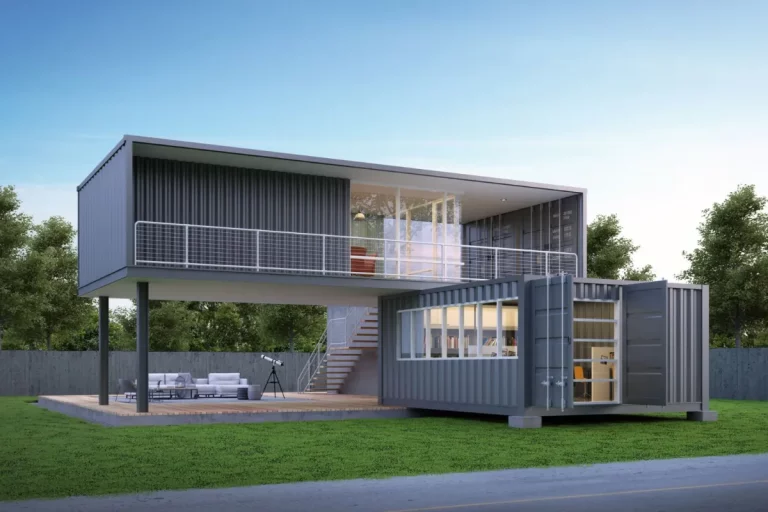When you hear “cold storage,” what’s the first image that pops into your head? Maybe it’s just big freezers packed with frozen foods, or those super-special cool rooms holding sensitive medicines before they get sent out. And while that’s certainly true, it barely scratches the surface of how monumentally important cold storage has become in today’s industrial world. You might be surprised to learn that these aren’t just specialized warehouses anymore; they’re rapidly turning into the absolutely indispensable backbone of modern manufacturing, supporting an incredible range of industries. We’re talking critical infrastructure that helps production happen. The very nature of cold storage properties has evolved dramatically. Early in my career, I’ll admit, cold storage often felt like just another unavoidable line item, an expense we had to swallow. Now? I see it as the nervous system of intricate production lines, a truly critical piece that enables precision and drives innovation. This isn’t simply about keeping things cold; it’s fundamentally about protecting the integrity of materials, making complex processes possible, and shielding the supply chain from all sorts of troubles. Manufacturers today are staring down unprecedented demands for quality, for highly specific products, and for operations that can weather any storm. This constantly shifting landscape has pushed advanced cold storage solutions right into a central, strategic spotlight. It’s no longer just a utility; it’s a vital partner in reaching operational excellence and keeping that crucial competitive edge. Beyond the Freezer Aisle: Redefining Cold Storage in Manufacturing More Than Just Food: Diverse Applications Our usual picture of cold storage normally limits its role to just keeping perishable foods fresh. But when you step into modern manufacturing, the reality is far more expansive. So many sophisticated processes and high-tech products demand incredibly precise temperature control to keep them effective and structurally sound. Let’s think beyond the supermarket: we’re talking about sensitive electronic components, industrial chemicals that simply break down if they’re not kept cool, specialized automotive composites needing exact curing temperatures, biological reagents used in advanced materials, and even tailored building materials whose properties are entirely temperature-dependent. Each of these requires an environment that’s meticulously controlled to prevent degradation, maintain crucial specifications, and extend the valuable shelf life of costly raw materials. I remember working with a client who made advanced aerospace components. Initially, they only thought about cold storage for their food-grade lubricants. But then they realized their high-performance resins, which were absolutely critical to the final product’s strength, were having premature curing issues due to ambient warehouse temperatures. Once they integrated dedicated cold storage, it literally transformed their reject rates and significantly improved product consistency. It proved to all of us that ‘cold’ isn’t just for perishables anymore. From Niche to Necessity: An Evolving Mindset This wider application has really driven a huge shift in how manufacturers think about cold storage. What was once brushed off as a necessary but burdensome overhead cost is now, more and more, understood as a powerful strategic asset – a genuine competitive advantage critical for ensuring quality and maintaining product integrity. The global marketplace is constantly pushing for higher quality standards, more custom products, and faster delivery times. These market forces absolutely demand a manufacturing setup where material stability and process precision are paramount, actively accelerating the move toward greater operational efficiency. I’ve personally seen this mindset change countless times, and it invariably drives profound improvements, turning companies from those simply reacting to problems into ones proactively optimizing their entire supply chain, with advanced temperature-controlled environments serving as a core enabler. The “Backbone” Unpacked: Core Functions and Strategic Value Ensuring Product Integrity and Quality Control At its very heart, modern manufacturing deeply relies on consistency and precision. Cold storage is truly paramount here, directly maintaining the quality and effectiveness of raw materials, anything that’s “work in progress,” and even finished goods. It prevents spoilage, stops chemical degradation, or blocks unwanted reactions that could completely compromise the final product. But it’s not just about being ‘cold’; it’s about crafting those ideal, perfectly controlled conditions. Precise temperature and, often, humidity control are absolutely crucial, especially for sensitive components. Take, for a real-world example, a batch of specialized epoxy resins destined for an automotive application: a temperature excursion even a few degrees too high can kick off premature curing, making the material completely unusable. I once observed a manufacturer wrestling with persistent issues regarding the viscosity of a critical chemical precursor; once they simply integrated dedicated cold storage for just this one component, it entirely resolved a quality control nightmare that had plagued them for months, ultimately saving them hundreds of thousands in wasted product. This meticulous control is fundamental to quality assurance and genuinely helps extend the shelf life of expensive inputs, ensuring regulatory compliance and safeguarding against product failure. Optimized Inventory Management and Just-In-Time (JIT) Production The smart integration of cold storage solutions also enables truly superior inventory optimization and serves as a powerful ally for lean manufacturing and Just-in-Time (JIT) principles. By guaranteeing the stability and usability of temperature-sensitive materials, manufacturers can keep less inventory on hand, significantly cutting down on waste and all those associated holding costs. Strategic placement of cold storage facilities—whether they’re integrated right into a factory floor or located conveniently near distribution hubs—minimizes transit times and operational expenses. In turn, this allows for a far more fluid and efficient movement of materials within the entire supply chain. I recall working with a company that, by strategically decentralizing their cold storage closer to their assembly lines, managed to slash their raw material lead times by nearly $30%$. This shift didn’t just streamline production; it also dramatically improved their cash flow by reducing the capital tied up in inventory. Supply Chain Resilience and Risk Mitigation In today’s increasingly unpredictable global environment, having a robust supply chain that can bounce back is absolutely non-negotiable. Cold storage plays a genuinely critical role in cushioning against disruptions, ensuring continuous production, and minimizing financial losses from unforeseen events. From natural disasters to geopolitical instability, unexpected events can completely paralyze supply chains.








